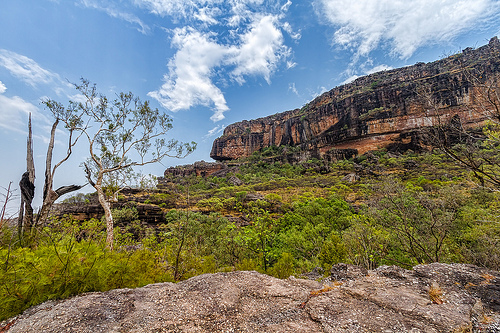An international team of scientists including the University of Adelaide’s Professor Corey Bradshaw has found that species living in rainforest fragments could be far more likely to disappear than was previously assumed.
Published today in the leading journal Science, the researchers outlined a study spanning two decades in which they witnessed the near-complete extinction of native small mammals on forest islands created by a large hydroelectric reservoir in Thailand.
“Tropical forests remain one of the last great bastions of biodiversity, but they continue to be felled and fragmented into small ‘islands’ around the world,” says co-author Professor Corey Bradshaw, Director Ecological Modelling at the University of Adelaide’s Environment Institute.
“This study shows we need to be even more concerned than we thought – the speed at which there was near-total loss of native small mammals was alarming and shows that leaving fragments of forest behind is not nearly enough to protect these species.”
“It was like ecological Armageddon,” says Luke Gibson from the National University of Singapore, who led the study. “Nobody imagined we’d see such catastrophic local extinctions.”
The study was motivated by a desire to understand how long species can live in forest fragments. If they persist for many decades, then this gives conservationists a window of time to create wildlife corridors or restore surrounding forests to reduce the harmful effects of forest isolation.
However, the researchers saw native small mammals almost vanish at great speed, with just a handful remaining – on average, less than one individual per island – after 25 years.
As well as suffering the effects of population isolation, the small mammals also had to deal with a devastating invader – the Malayan field rat. In just a few years, the invading rat virtually displaced all native small mammals. The field rat normally favours villages and agricultural lands, but will also invade disturbed forests.
“This tells us that the double whammy of habitat fragmentation and invading species can be fatal for native wildlife,” says Dr Antony Lynam, from the US-based Wildlife Conservation Society. “And that’s frightening because invaders are increasing in disturbed and fragmented habitats around the world.”
“The bottom line is that we must conserve large, intact habitats for nature,” says Luke Gibson. “That’s the only way we can ensure biodiversity will survive.”
Near-complete extinction of native small mammal fauna 25 years after forest fragmentation is published in Science and is available at www.sciencemag.org.







 CSIC researcher at the Estación Biológica de Doñana in Seville, Dr Alejandro Rodríguez, says: “Habitat in the south-west of the Iberian Peninsula, where the two existing populations of lynx persist, is most likely to be inhospitable to lynx by the middle of this century.”
CSIC researcher at the Estación Biológica de Doñana in Seville, Dr Alejandro Rodríguez, says: “Habitat in the south-west of the Iberian Peninsula, where the two existing populations of lynx persist, is most likely to be inhospitable to lynx by the middle of this century.”

